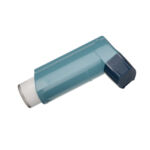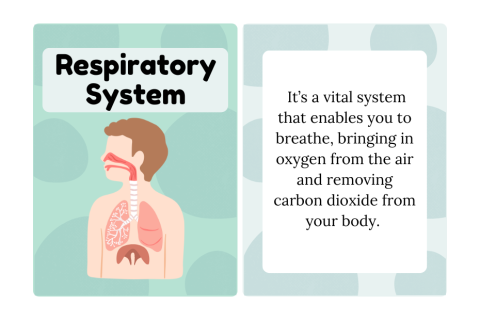Homecare Made Easy: Choosing t...
Apr 18, 2024Breath of Life: Exploring the Respiratory System

Overview of the Respiratory Tract or System
The respiratory tract or system of humans consists of a network of structures and organs, which work to supply life-sustaining oxygen to our body and expel carbon dioxide from it. Here, carbon dioxide is the waste product excreted via cellular metabolism. The complete system has a crucial role in our health, from our first breath to several inhales/exhales throughout life.
Functions of the Respiratory System
The respiratory system of humans performs multiple functions than simply inhalation and exhalation processes. These include the following-
- It allows us to smell and talk
- Supplies warm air to match your body temperature
- Moisturizes to maintain the humidity level based on your body’s requirements
- Delivery of oxygen to diverse body cells
- Removal of waste gases from your body
- Protection of airways from irritants and harmful substances
Components of Respiratory Tract
To perform the functions properly, the entire respiratory system consists of two main parts: the upper and lower respiratory tract. The upper tract consists of the pharynx, nasal cavity, and nose. In contrast, the lungs, bronchi, trachea, and larynx are the lower respiratory tracts.
A Brief on Respiratory Diseases
If any of the components of either tract is infected, a person will suffer certain respiratory diseases. In other words, respiratory problems occur whenever any disease affects the lungs and other components of the respiratory system.
A few common infectious respiratory diseases are pulmonary fibrosis, asthma, pneumonia, COPD or chronic obstructive pulmonary disease, and lung cancer. Most diseases are caused by smoking tobacco, infections, breathing tobacco smoke, asbestos, radon, and other types of air pollution.
Upper Respiratory Tract Infections, their Symptoms and Causes
Especially, humans suffer from infections in the upper respiratory tract due to the exposure of nose and nasal cavities to polluted air and dust particles. Hence, we will discuss a few causes related to respiratory infection of the upper tract and easy methods to prevent it.
Upper respiratory tract infections will affect your throat and sinuses. A few common infections are the common cold, sinus infection or Sinusitis, sore throat, epiglottitis, and laryngitis. Anyone with the infection may have a cough and cold, hoarse voice, fever, lack of energy and fatigue, runny nose, red eyes, and sore throat. A few people may even have swelling on the lymph nodes.
You may face such infections whenever a bacteria or virus enters your respiratory tract. A prime reason behind such infections is touching an infected surface. Alternatively, you may get infection by shaking your hands with a sick person and later, touching the same hands to your nose, mouth, and eyes. The germs will enter your body from the pores of your hands and cause infection in your body.
Methods to Prevent Upper Respiratory Tract Infections
Most cases associated with upper respiratory tract infection take place from viruses and they do not need specific treatment. Instead, people may diagnose on their own and treat symptoms at home. However, depending on your living area and job environment, you should visit your family doctor and get protection in advance.
Practice Hygiene and Aware of It to Others
One of the best ways to keep yourself and other family members healthy is to practice proper hygiene and be aware of it to your fellows.
- Wash and sanitize your hands regularly, and before preparing/having your food
- Cough and sneeze into a tissue or arms and wash your hands later
Follow a Healthy Lifestyle
- Avoid or take certain precautions while contacting with sick people
- Consume water and other essential fluids in enough amounts
- Get proper sleep and rest
- Dedicate some time for exercises to boost your immunity
- Stop smoking tobacco and cigarettes to keep your upper respiratory tract healthy and avoid lung diseases as well
- Make a habit of eating healthy foods consisting of veggies and immunity-boosting supplements
Consult Your Doctor
- You should consult your family doctor for the following-
- Schedule monthly appointments or as instructed by the healthcare provider for your regular checkups and certain immunizations
- Ask your doctor whether you and your children need a pneumococcal vaccine to prevent pneumonia
- Call your family doctor or a specialist immediately if your symptoms last for more than two weeks, or you have a high fever
Lungs Disease-A Major Respiratory Disease
Other than upper respiratory tract infection, many humans suffer from another common category of respiratory ailment that refers to lung diseases. As the name itself, such diseases refer to problems in the lungs that prevent them from working properly. The lung diseases may be of different categories, which are airway diseases, lung circulation diseases, and lung tissue diseases.
Airway diseases affect the airways or tubes that carry gases with oxygen in and out of your lungs and they may block or make your airways narrow. Lung circulation diseases affect the lungs’ blood vessels, which often take place due to scarring, clotting, or blood vessel inflammations. They prevent your lungs from intake oxygen and affect your heart functions.
Last in the category is lung tissue disease, which affects the structure of your lung tissues. In most cases, your doctor recommends tablets and inhalers to treat your lung diseases. However, if the problem becomes complicated, one should refer to oxygen therapy, lung transplant, and pulmonary rehabilitation.
Conclusion
A properly functioning upper respiratory tract is essential for a healthy respiratory system. Simultaneously, a healthy respiratory system is the key to good health and well-being. Therefore, you must follow a healthy lifestyle and adopt healthy habits to optimize your respiratory functions and avoid or at least reduce respiratory problems.




